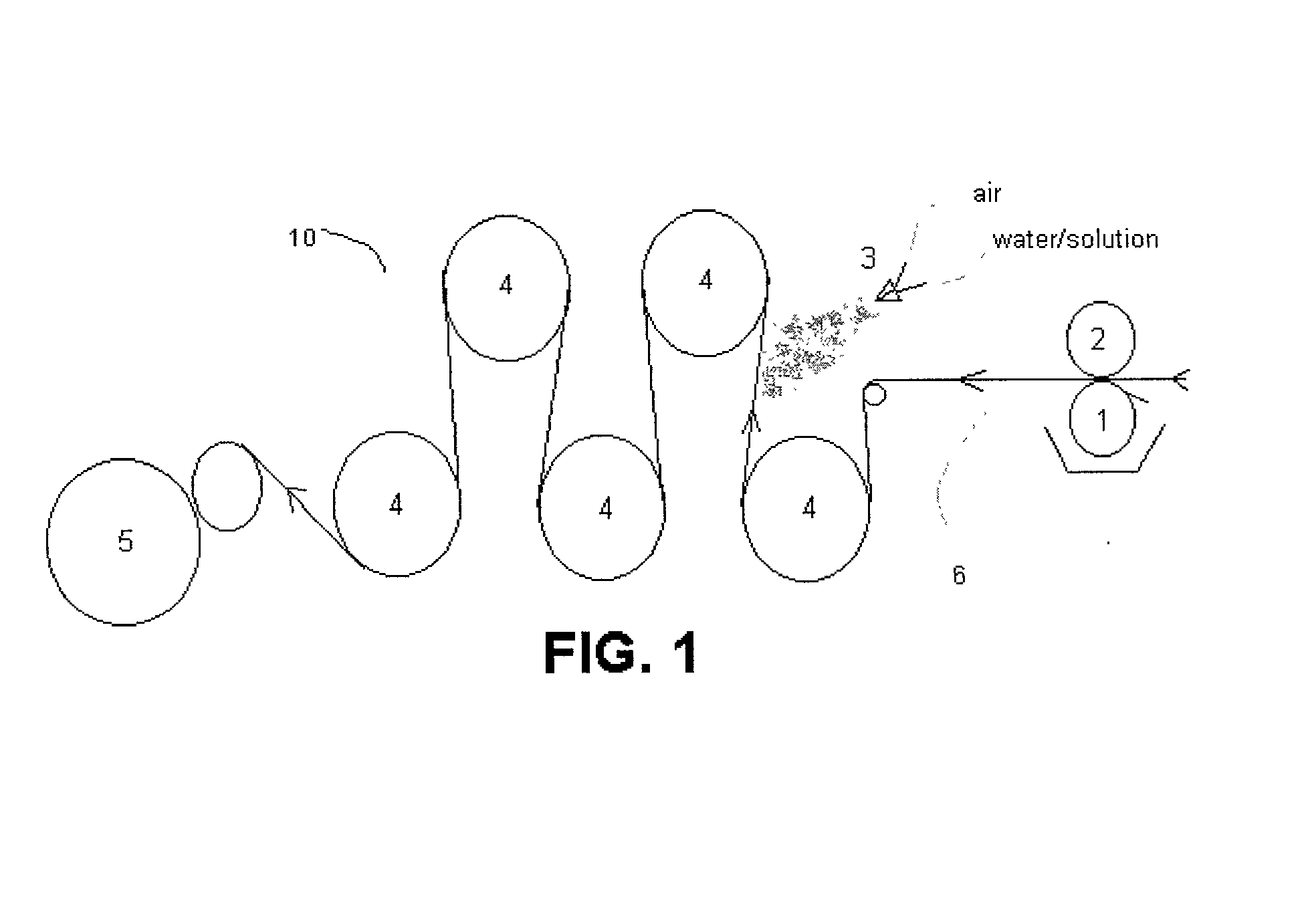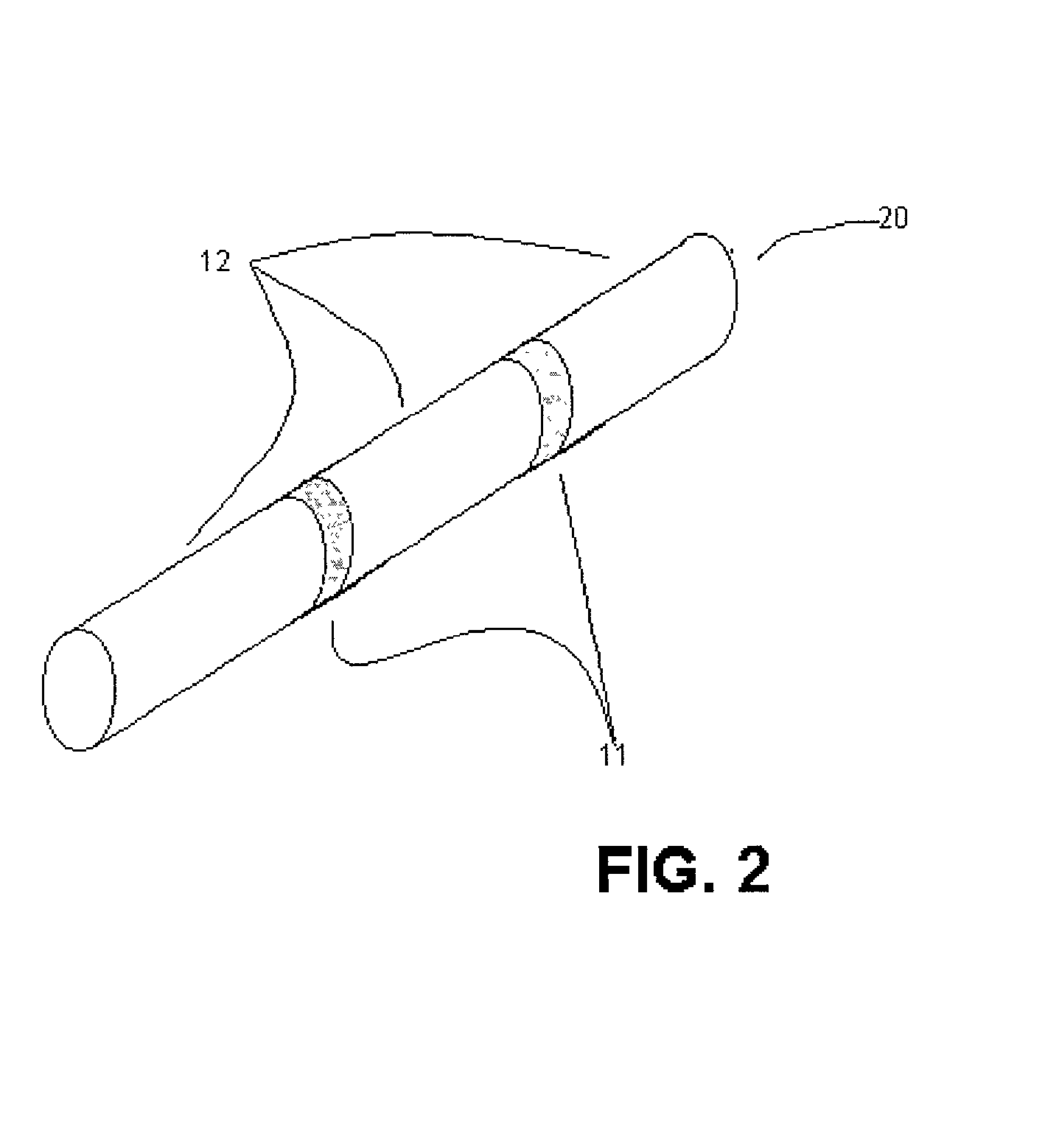Novel materials and method of making same for low ignition propensity products
a technology of low ignition propensity and products, applied in the direction of synthetic resin layered products, printing, special ornamental structures, etc., can solve the problems of cigarette paper, inability to use cigarette, various drawbacks of modified cigarette wrappers, etc., to reduce burn rate, reduce (coresta) porosity, and ensure the effect of closur
- Summary
- Abstract
- Description
- Claims
- Application Information
AI Technical Summary
Benefits of technology
Problems solved by technology
Method used
Image
Examples
example 1
[0038] Demonstration of the Effect of Thermoplastic Polymer Treatments on the Coresta Porosities of Base Paper
[0039] Shown in Table I are sample descriptions involving the aqueous dispersions of ethyl cellulose (EC) or cellulose acetate phthalate (CAP) with or without ethyl hydroxyethyl cellulose (EHEC). (EHEC is commercially available from Azo Nobel Surface Chemistry, Inc., Stratford, Conn. under the brand name Bermocol).
[0040] Cellulosic polymers are commercially available as submicron dispersions in water. They are AquaCoat ECD.TM., (the ethyl cellulose version with approximately 29% w / w EC solids) and AquaCoat CPD.TM., (a cellulose acetate phthalate version with applroximately 26% w / w CAP solids) both obtained from FMC, Philadelphia, Pa. The viscosities of these materials as received were tested and found to be 38 cps and 42 cps via the Brookfield #2 at 100 rpm respectively. Both of these materials were used to print samples of cigarette paper via the unheated size press rotogra...
example 2
[0042] Demonstration of Ethyl Cellulose or Cellulose Acetate Phthalate Aqueous Suspension as Suitable Polymers for Treating Cigarette Papers
[0043] Shown in Table II are ignition propensity testing results of the source samples shown in Table I. The samples in Table I were used as the cigarette wrapper. Two brands of cigarettes, Brand A and Brand B were made. The samples were tested for free static burning and filter pad extinction. A majority of the samples tested showed satisfactory self-extinction via the Whatman #2 Filter Pad test. Free burn rates for Brand A Control ranged about 54 mg / minute with no extinctions. Free burn rates for Brand B control ranged from about 51 to 60 mg / minutes with no extinctions. Controls used here had no polymer suspension treated areas.
[0044] Presented in Table II are burning and extinction tests conducted on Brand A and Brand B cigarettes and the results are the average of three cigarettes for each brand. Note: Free burn rates are for cigarettes held...
example 3
[0046] Demonstration of HPC as a Suitable Thermoplastic Polymer for Treating the Base Papers
[0047] The printing ink was prepared by dispersing hydroxypropyl cellulose Hercules Aqualon Klucel J grade) into warm, 40.degree. C. to 45.degree. C., water until the concentration was 25% w / w HPC. The mixture was allowed to cool until the temperature approached the LCST point of about 37.degree. C. At this time, the stirring was turned off and the HPC allowed to dissolve and hydrate overnight. The next morning, the solution was so thick that it could not be poured or even removed from the beaker. As the mixture was re-heated, the HPC began to precipitate and cloud; at this point stirring was begun. In the temperature range of 60.degree. C. to 80.degree. C., the mixture was milky white with precipitated HPC and the Brookfield viscosity was 490 cps (#2 spindle, 100 rpm). The rotogravure station on the Pilot Size Press was preheated to 65.degree. C. with hot water, water drained and the warm 65...
PUM
| Property | Measurement | Unit |
|---|---|---|
| porosities | aaaaa | aaaaa |
| temperature | aaaaa | aaaaa |
| LCST | aaaaa | aaaaa |
Abstract
Description
Claims
Application Information
 Login to View More
Login to View More - R&D
- Intellectual Property
- Life Sciences
- Materials
- Tech Scout
- Unparalleled Data Quality
- Higher Quality Content
- 60% Fewer Hallucinations
Browse by: Latest US Patents, China's latest patents, Technical Efficacy Thesaurus, Application Domain, Technology Topic, Popular Technical Reports.
© 2025 PatSnap. All rights reserved.Legal|Privacy policy|Modern Slavery Act Transparency Statement|Sitemap|About US| Contact US: help@patsnap.com


